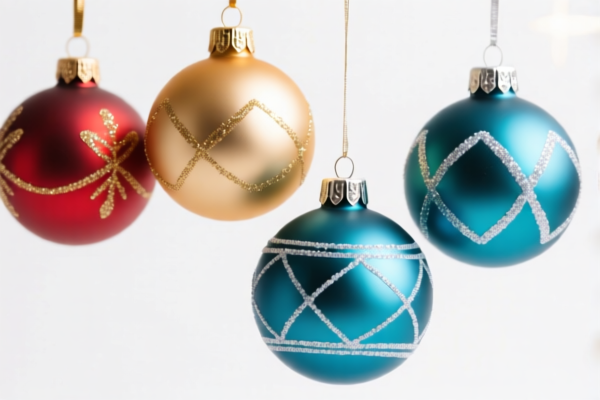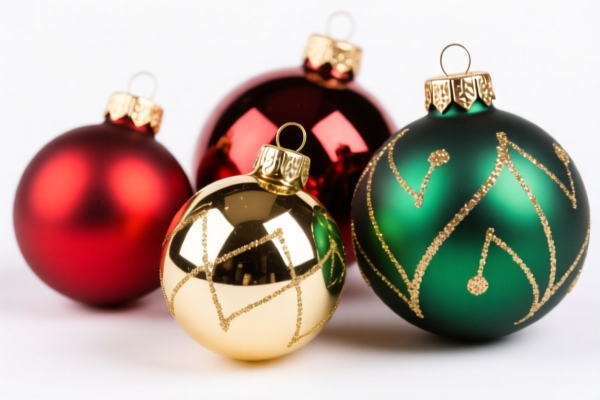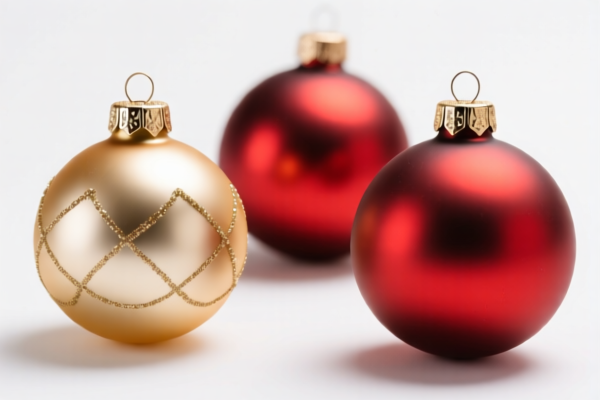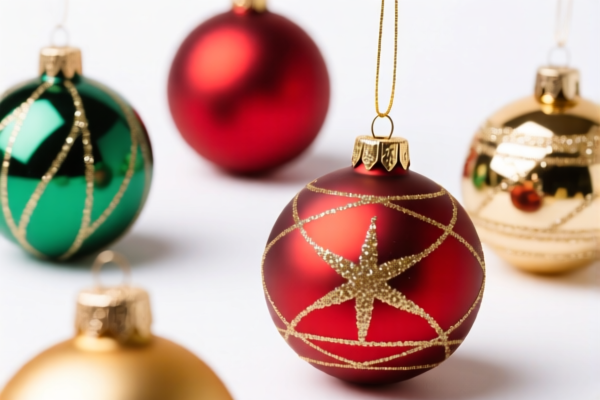| HS Code | Official Doc | Tariff Rate | Origin | Destination | Effective Date |
|---|---|---|---|---|---|
| 7013991000 | Doc | 52.5% | CN | US | 2025-05-12 |
| 7018905000 | Doc | 61.6% | CN | US | 2025-05-12 |
| 7018901000 | Doc | 40.7% | CN | US | 2025-05-12 |
| 3902900050 | Doc | 61.5% | CN | US | 2025-05-12 |
| 3906905000 | Doc | 59.2% | CN | US | 2025-05-12 |
| 3908907000 | Doc | 61.5% | CN | US | 2025-05-12 |
| 3909100000 | Doc | 61.5% | CN | US | 2025-05-12 |
| 3909505000 | Doc | 61.3% | CN | US | 2025-05-12 |
| 3912900090 | Doc | 60.2% | CN | US | 2025-05-12 |
| 3919901000 | Doc | 61.5% | CN | US | 2025-05-12 |
| 3919905060 | Doc | 60.8% | CN | US | 2025-05-12 |
| 3923300090 | Doc | 58.0% | CN | US | 2025-05-12 |




Glass Ornaments
Glass ornaments are decorative objects made primarily from glass, traditionally used for embellishment and celebration, most commonly associated with Christmas trees, but with applications extending to year-round décor and various artistic expressions.
Material
The core material is glass, though the specific type varies significantly. Common types include:
- Soda-lime glass: The most frequently used due to its affordability and ease of shaping.
- Borosilicate glass: Known for its heat resistance and durability, often used for more intricate designs or ornaments intended for outdoor use.
- Hand-blown glass: Created by glassblowers, offering unique shapes and artistry.
- Molded glass: Produced using molds to create repeatable designs.
- Crystal glass: Contains lead oxide, resulting in higher clarity and brilliance, typically reserved for higher-end ornaments.
Surface treatments are common, including:
- Paint: Applied for color and detailed designs.
- Glitter: Adds sparkle and festivity.
- Metallic coatings (silvering, golding): Provides a reflective finish.
- Sequins, beads, and other embellishments: Used for textural and visual interest.
Purpose
The primary purpose of glass ornaments is decorative. They serve to:
- Celebrate holidays: Specifically Christmas, but also other seasonal events.
- Enhance aesthetic appeal: Adding color, light reflection, and visual interest to spaces.
- Express personal style: Reflecting individual tastes and preferences.
- Serve as collectibles: Vintage or limited-edition ornaments can hold significant value.
Function
Glass ornaments function primarily as visual elements. Their design often incorporates:
- Reflection: Utilizing the glass surface to reflect light and create a shimmering effect.
- Color: Providing vibrant hues and patterns.
- Shape: Employing a wide variety of forms, from simple spheres to complex figures.
- Suspension: Typically designed with a hook or loop for hanging.
Usage Scenarios
- Christmas Trees: The most traditional use, adorning evergreen trees during the holiday season.
- Home Décor: Displayed year-round as decorative accents in living rooms, dining rooms, or other spaces.
- Event Decorations: Used in holiday parties, weddings, or other special occasions.
- Collectibles Display: Showcased in dedicated collections or display cases.
- Sun Catchers: Designed to refract light and create colorful patterns when hung in windows.
Common Types
- Sphere Ornaments: The most classic shape, often featuring painted designs or glitter.
- Figurines: Representing characters, animals, or objects.
- Icicles: Elongated, tapered shapes resembling frozen water.
- Stars: A traditional symbol of celebration.
- Snowflakes: Intricate designs evoking winter themes.
- Bell Ornaments: Often featuring a metallic finish and a clapper.
- Hand-Blown Ornaments: Unique, artistic pieces created by glassblowers.
- Vintage Ornaments: Antique or collectible ornaments with historical significance.
- Personalized Ornaments: Featuring names, dates, or other custom details.
Glass ornaments can encompass a variety of items depending on their specific composition and use. Based on the provided information, several HS codes may be relevant.
-
7013.99.10.00: This HS code covers glassware of a kind used for table, kitchen, toilet, office, indoor decoration or similar purposes (other than that of heading 7010 or 7018). Specifically, it includes “Other glassware: Other: Glassware decorated with metal flecking, glass pictorial scenes or glass thread- or ribbon-like effects, any of the foregoing embedded or introduced into the body of the glassware prior to its solidification; millefiori glassware; glassware colored prior to solidification, and characterized by random distribution of numerous bubbles, seeds or stones, throughout the mass of the glass”. The tariff is a base tariff of 15.0%, an additional tariff of 7.5%, and an additional tariff of 30% after April 2, 2025, resulting in a total tariff of 52.5%.
-
7018.90.50.00: This HS code covers glass beads, imitation pearls, imitation precious or semiprecious stones and similar glass smallwares and articles thereof other than imitation jewelry; glass eyes other than prosthetic articles; statuettes and other ornaments of lamp-worked glass, other than imitation jewelry; glass microspheres not exceeding 1 mm in diameter: Other: Other. The tariff is a base tariff of 6.6%, an additional tariff of 25.0%, and an additional tariff of 30% after April 2, 2025, resulting in a total tariff of 61.6%.
-
7018.90.10.00: This HS code covers glass beads, imitation pearls, imitation precious or semiprecious stones and similar glass smallwares and articles thereof other than imitation jewelry; glass eyes other than prosthetic articles; statuettes and other ornaments of lamp-worked glass, other than imitation jewelry; glass microspheres not exceeding 1 mm in diameter: Other: Glass eyes, except prosthetic articles. The tariff is a base tariff of 3.2%, an additional tariff of 7.5%, and an additional tariff of 30% after April 2, 2025, resulting in a total tariff of 40.7%.
It is important to note that the specific classification will depend on the precise composition and manufacturing process of the ornaments. If the ornaments are decorated with metal flecking, pictorial scenes, or thread-like effects embedded in the glass, HS code 7013.99.10.00 may be the most appropriate. If they are statuettes or ornaments made using lamp-working techniques, HS code 7018.90.50.00 or 7018.90.10.00 may be more suitable.
Customer Reviews
No reviews yet.